¶ Why paint the steel tubes ?
Painting your PrintNC is a good thing, for two reasons :
- Cosmetic : A well painted CNC will look better
- Prevention : Paint will prevent rust
Rust is a result of the steel oxidation with oxygen, when put in presence of water. Normal air humidity will bring enough water to allow steel to rust. That's why protecting your steel tubes is important.
¶ Powder Coating
An alternative to painting your PrintNC is to have the steel powder coated. This is generally a more expensive option, but may produce a more durable and consistent coating than painting.
Do some research into local powder coating businesses and just drop your steel off and pick it up a week later fully ready to assemble. This may be easier for people who don't have access to a suitable place to create a paint booth.
¶ No Paint Required Options
If you've ordered the new kit with the stainless steel tubing, then congratulations, you're done. You can skip this step and continue assembling your PrintNC.
If you're sourcing your own steel, you can look for stainless or galvanized options as well. This is likely to be more expensive than the usual mild steel tubing that most people use, but it's another option if you don't want to go through the effort of prepping and painting steel.
¶ Painting before or after assembly
There are advantages and disadvantages to painting before or after the assembly.
| Pros | Cons | |
| Before Assembly |
|
|
| After Assembly |
|
|
The most common recommendation is to drill / tap / assemble your machine following the instructions, disassemble it, paint it and then reassemble. Unless you're really pressed for time, the extra effort is generally worth it.
¶ Preparing your steel tubes for painting
Before painting, you will need to clean and prepare your steel tubes. If the steel isn't prepared and painted correctly, you may end up with a lot of wasted effort when the paint doesn't adhere correctly and peels off. Oil, grease, rust or flaking metal will all prevent the paint from having a chance to adhere properly and provide a nice, protective finish to your machine.
¶ Cleaning
Acetone or various degreasers (Spray Nine, Awesome Orange, Simple Green, etc.) can be used to clean your steel tubes and also de-grease them thoroughly. Use rags and wipe all the faces until all surfaces are clean. You generally don't need to worry about cleaning the insides of the tubing. Stuff a rag through to clear out the worst of the oil and leave the rest to protect the inside against rust, as it generally won't be painted.
¶ Primed Steel
Some (lucky?) people have reported receiving steel that already had a primer on it. If it's pre-primed, or has any other coating, ensure that the primer is well adhered to the metal, clean off any loose residue and wipe it down thoroughly with a solvent or degreaser to ensure that it's ready for painting.
¶ Removing rust and mill scale
¶ What is mill scale?
(From wikipedia)
Mill scale is formed on the outer surfaces of plates, sheets or profiles when they are produced by passing red hot iron or steel billets through rolling mills. Mill scale is bluish-black in color. It is usually less than 0.1 mm (0.0039 in) thick, and initially adheres to the steel surface and protects it from atmospheric corrosion provided no break occurs in this coating.
Because it is electrochemically cathodic to steel, any break in the mill scale coating will cause accelerated corrosion of steel exposed at the break. Mill scale is thus a boon for a while, until its coating breaks due to handling of the steel product or due to any other mechanical cause.
Mill scale becomes a nuisance when the steel is to be processed. Any paint applied over it is wasted, since it will come off with the scale as moisture-laden air gets under it.
There are several ways to remove rust / mill scale
¶ Sanding
You can use a classic orbital sander with a 120 grit then a 180 grit in order to prepare correctly your steel tubes.
You can also buy a Scotch-Brite Clean and Strip XT Pro Disc - Rust and Paint Stripping Disc - 4.5” diam. x 5/8-11 Quick Change Thread - Extra Coarse Silicon Carbide for an angle grinder to remove the mill scale.
A wire wheel can also be used in an angle grinder or drill to rough up the surface and remove any loose material. These are generally available at hardware stores and are fairly inexpensive.
Be careful if using flap discs on an angle grinder, as they can be quite aggressive and quickly grind away the base steel if you're not careful.
Another option is to use a scouring powder instead of sanding. Give the steel a good scrub with something like Barkeeper's Friend, Comet, Ajax, etc. and then wipe it down thoroughly until all residue is gone. This is more time-consuming, but less aggressive than power sanding.
¶ Steel pickling
Another method to clean your steel is to “pickle” them. This method uses acid to dissolve the mill scale and make it easier to remove. This method is purely optional.
Some people have reported that since pickling removes the mill scale from the inside of the tubes, which typically don't get painted, it can lead to rusting and flaking on the inside of the tubes. If you're going to put covers on the end of the tubes and don't care what happens inside, then this may not be a concern. It will take quite some time for the rust to eat through enough to cause any issues.
Please note that this method involves manipulation of dangerous materials. Please be mindful when manipulating them! Also, plan for where the liquid will drain into. It may leave a yellow stain on concrete.
¶ Procedure (by user Sterfield)
- Make a box big enough to hold the largest piece of steel + some extra height/length/width. I used two wooden boards I had leftover from my workbench build, and some smaller scraps, and built a 4 sided box (no bottom) because I didn’t have enough. A bottom doesn’t really make a difference if you use thick plastic sheeting. Another box alternative is to take some 2"x6" 6' boards and screw them together to make a box and 2'x8' for the plastic. In retrospect, I wish I would have made the box bigger.
- Pick up your ingredients
- HCL (aka Muriatic Acid) in some form (I got 30% at hardware store)
- Baking Soda (to neutralize the acid)
- Scotchbrite pads (or another scrubber to clean the mill scale)
- A couple of buckets and/or a hose for washing / rinsing
- Plastic sheeting (I went with thick since my box had no bottom)
- Some lightweight oil
- Recommended to wear disposable gloves when working with this
- Put the plastic sheeting into the box and tack down the edges so that it can’t fill inside.
- Fill a “neutralize” bucket with water.
- Add baking soda to the bucket – this is your neutralize bucket, also useful in case you spill or splash or otherwise need it. Probably want 10:1 water to baking soda ratio.
- Fill the box for the steel up with water. Pay attention to whether there is any slope to the ground. May consider adding shims to “level” the box.
- Add the acid to the water in the box (not water to acid) until you reach your desired concentration. When using HCL, even low concentrations will work (for example : 1.5L of 30% HCL with 80L of water or about 2%; for Americans that would be about 1 cup per 5 gallons).
- Put a test piece in, and run it for 20 minutes or so and see how it is.
- To remove the mill scale, you can use water and scotchbrite pad to remove most of it really easily. It will slough off. I used the baking soda water instead of plain water here since I wanted neutral runoff – although with the low concentration and a liberal amount of water its likely fine without it.
- Use the baking soda water and wipe everything on the steel liberally again to neutralize any remaining acid.
- Wash the steel with water one last time.
- Now dry the steel with some paper towels, regular towel, or whatever you have on hand. Then you want to apply the oil to the steel (it will begin rusting in about 30 minutes or less otherwise)
- When done with the liquid in the box, add the “neutralize” bucket into it. Also add baking soda until the soda no longer bubbles. Be sure to wash off the area really well, perhaps even power wash. If the water does not run to a close drain, you may have to power wash your neighbor's sidewalk, too.
- When you’re ready to prep for painting, remove the oil with your cleaner of choice, sand with some 60 grit to rough the surface a little more, and paint!

|
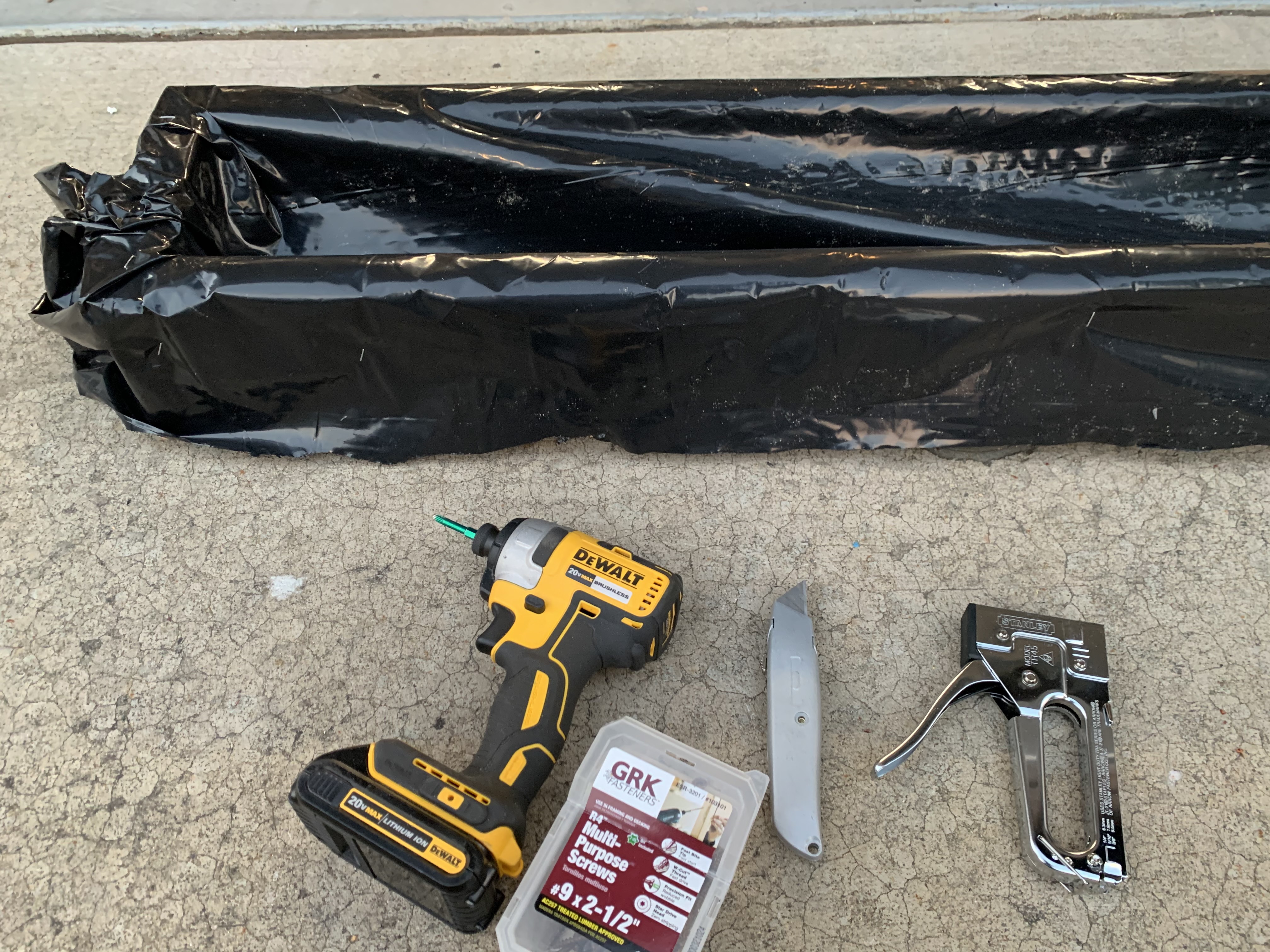
|
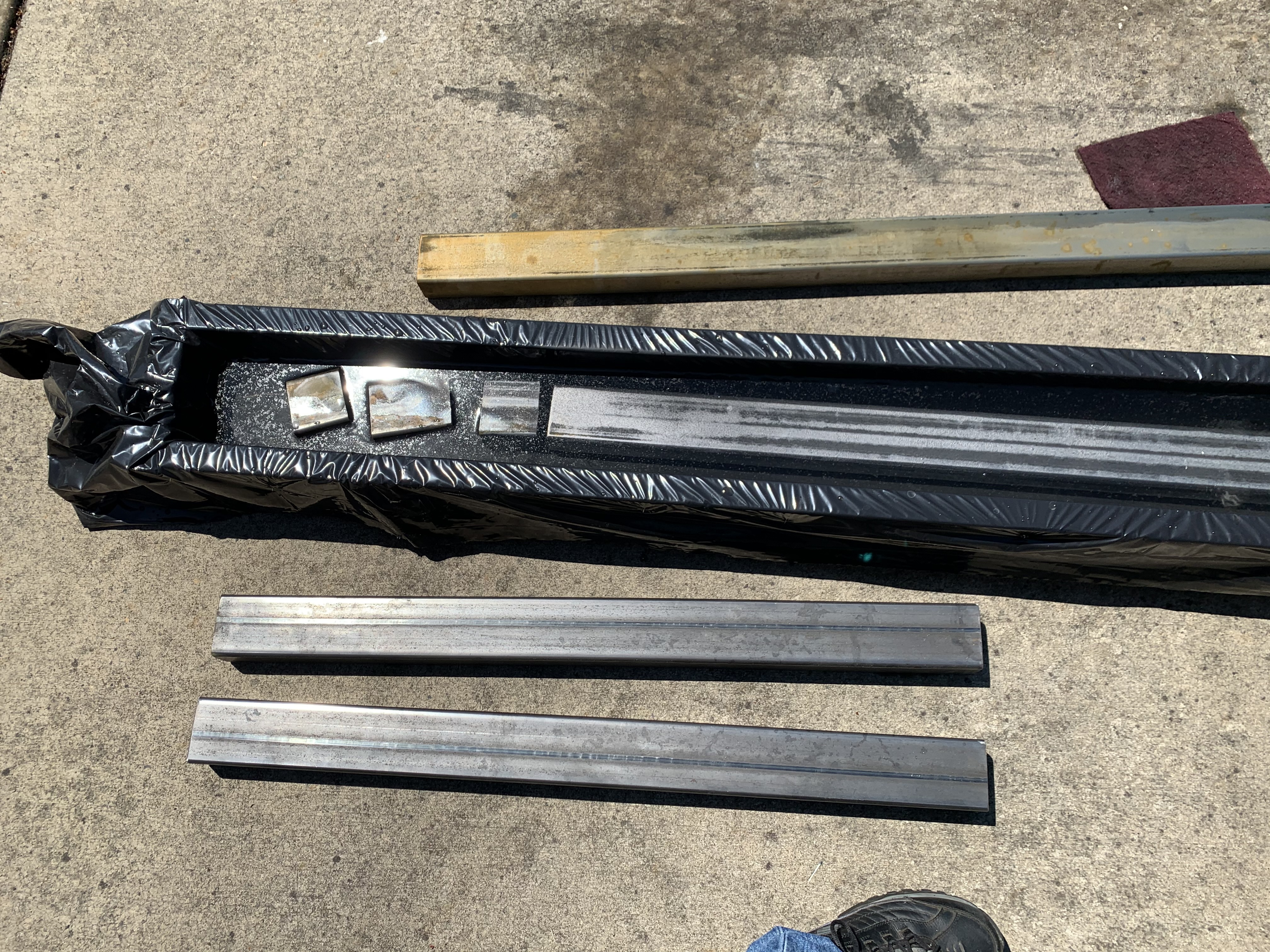
|
¶ Lemons
| If you cut a lemon into 3 pieces and use the lemon as a sponge, rub it on the steel. Wait about an hour. Be sure to remove the acidic residue before painting. Also, once you clean the steel with water, it will begin to rust very quickly. So, be prepared to prime the metal. (Thanks to user “salvo” for the tip.) |
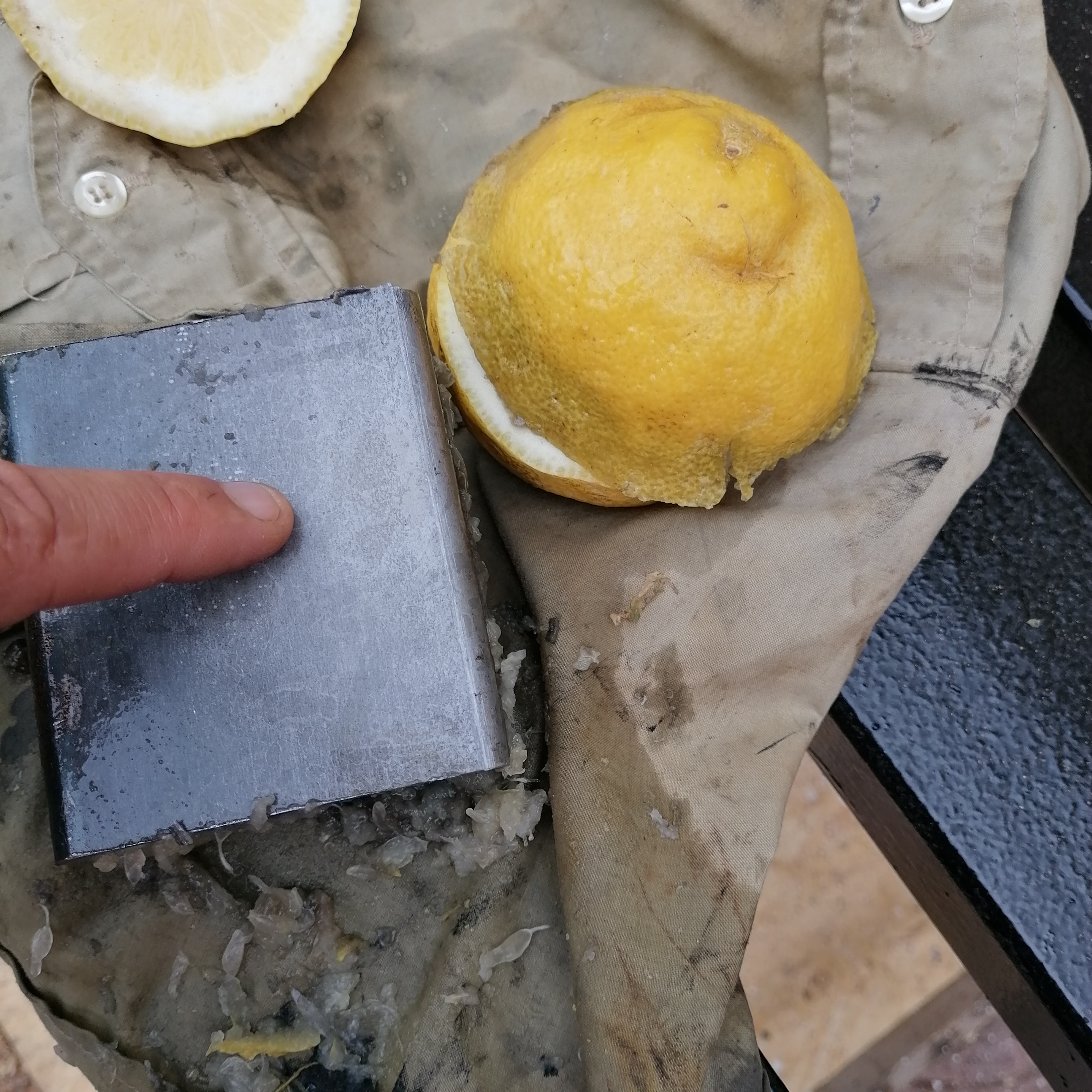
|
¶ Vinegar
An alternative to pickling with muriatic acid is to use white vinegar. This method will eat away all the rust and mill scale leaving a clean smooth surface to prime/paint on. See photo with and without mill scale (dark mill scale tube in the middle). Using cleaning vinegar (double strength) will provide quicker results.
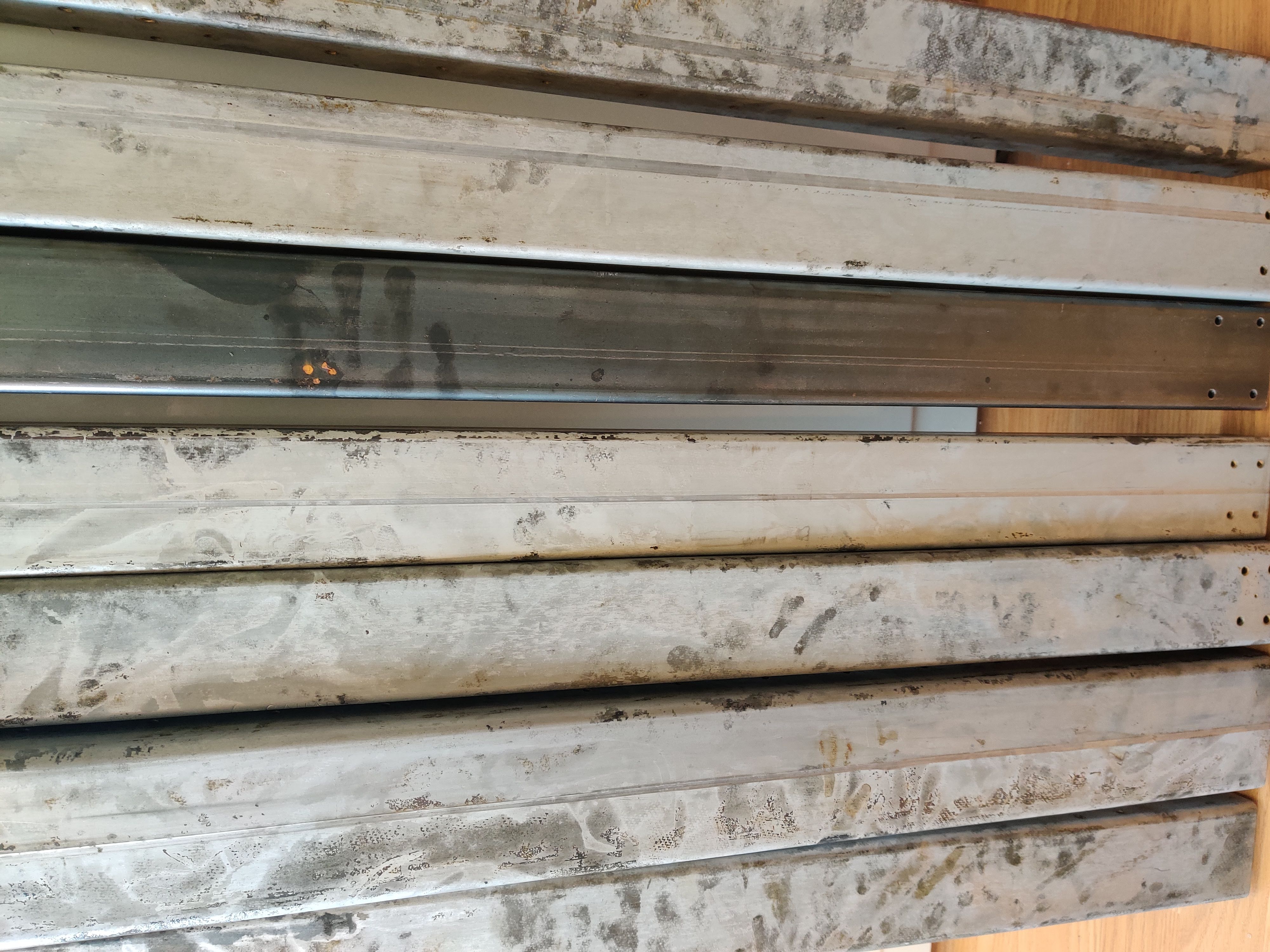
|
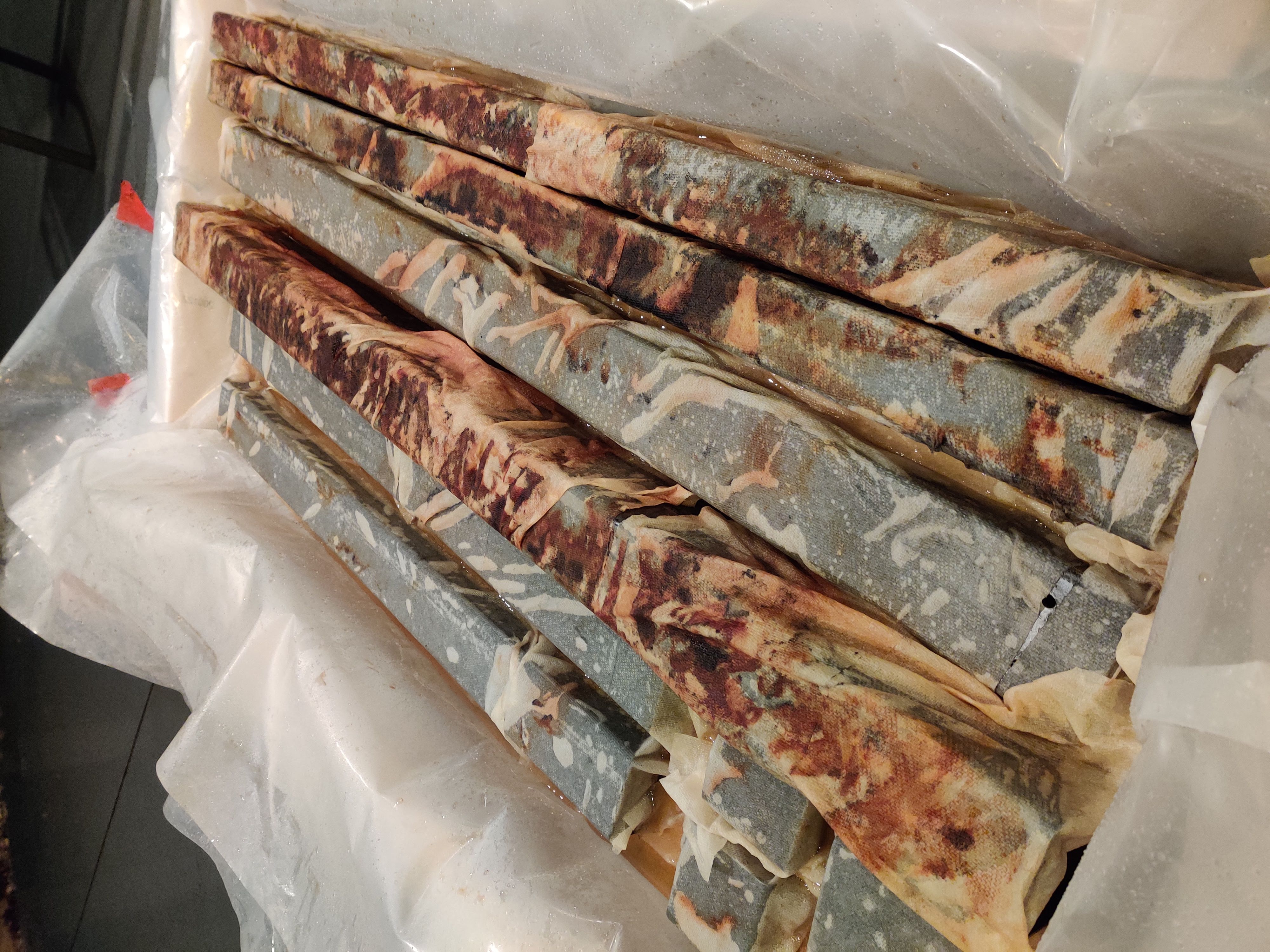
|
Make a waterproof container similar to the method used for muriatic acid. I instead used some building construction vapour barrier because I had some on hand and instead of building a box, I stacked up some 2x4 wood to make a makeshift bathtub. See photo.
Put some paper towel over top of the steel to keep the tops wet and let soak for 2-3 days.
Use a hose to remove the majority of gunk left on the steel from the vinegar bath. Hosing off all the vinegar is important to neutralize the acid, don't forget the inside of the tube. After hosing off, use a wire wheel on an angle grinder or drill to easily remove the remainder.
¶ Rust
Be prepared to paint the steel as it no longer has the protective coating of mill scale and will start to rust quickly, possibly within minutes. Keep it dry and away from moisture until painted. If you do find you need to store it for a short period of time before painting, look out for any rust, flash rusting etc. If you do find any hit it again with the wire wheel, some sandpaper or steel wool before painting. Any rust at this point should be minimal and come off quickly.
¶ Painting
Now that your steel tube have been prepared, they are ready to be painted.
¶ Preparation for painting
Before starting the actual painting job, run some lumber through each steel tube to allow easy painting of all faces. Be sure to put cardboard or something under/near the paint area for any overspray.
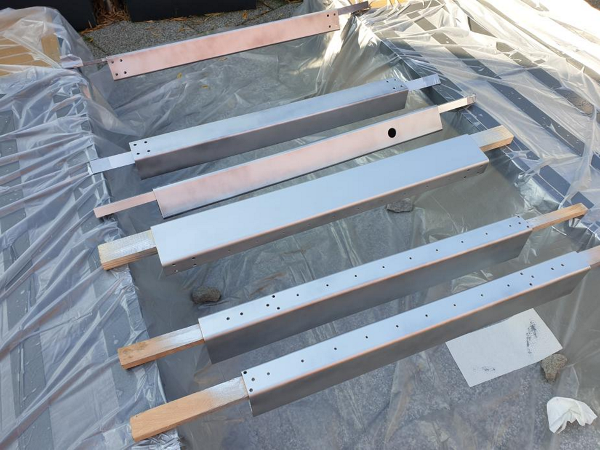
|
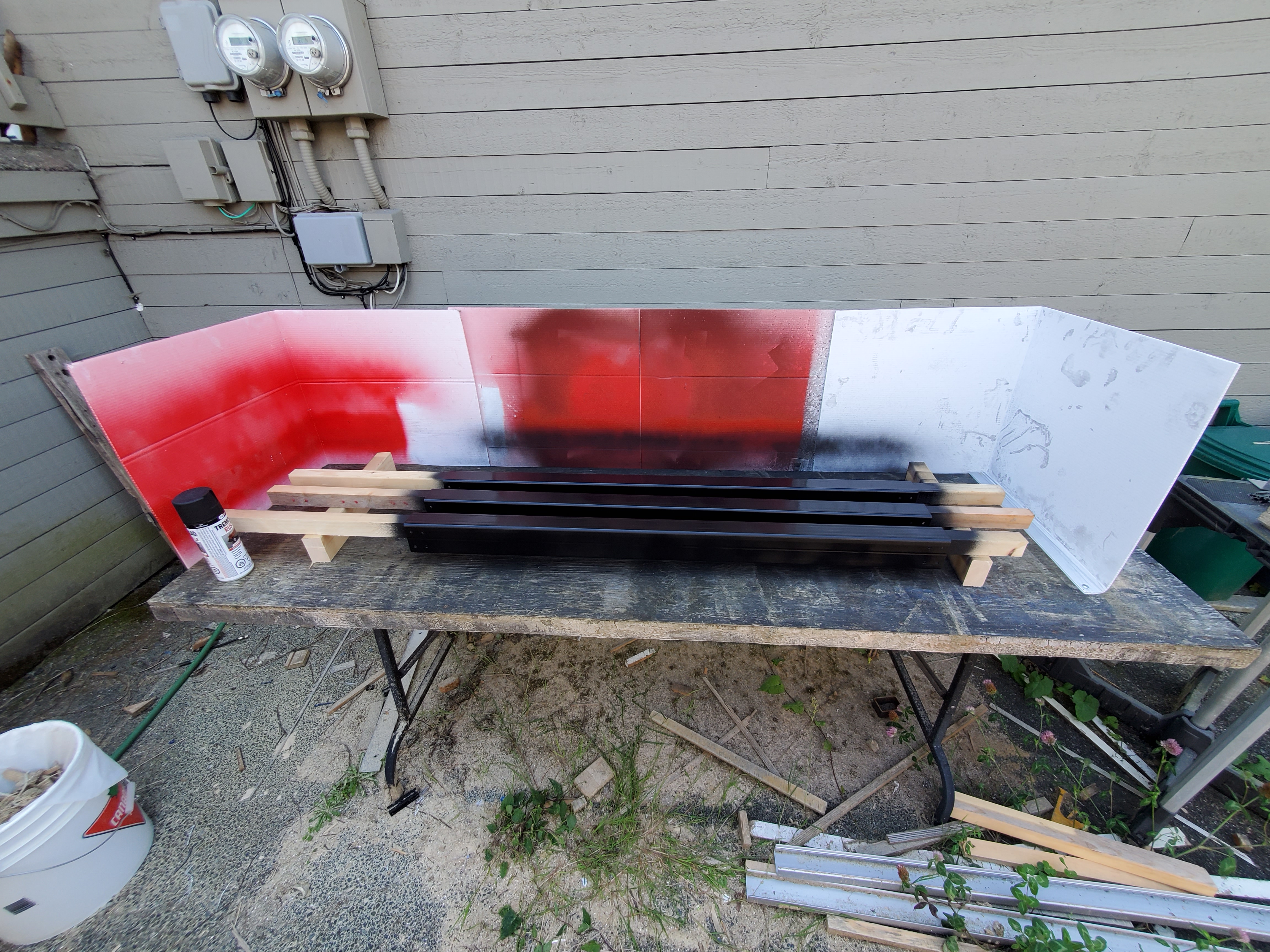
|
¶ Primer coat
Apply one coat of primer. (some spray paints act as a primer and paint).
An etching primer is recommended to give a stronger bond between the metal and the paint.
A single can of spray paint should be enough for the standard metalcutter sized PrintNC. I used a little over 1 can for a woodcutter sized PrintNC. I sprayed some down the inside of the tubes, which was probably wasted. Without doing that, a single can may have been enough.
¶ Finishing coat
Apply one to two coats of paint for a nice finish.
If you have drips or over sprays, wait until the paint is dry. Then with a scotch brite pad or fine steel wool, rub in the same direction. Then lightly spray paint that area a few times.
If you don't have access to an area where you can set up a spray booth, you can roll the paint with a foam roller instead with good results.
Two cans of spray paint should be enough for 2 coats on a standard metalcutter sized PrintNC. I used 2½ cans for a woodcutter sized PrintNC.